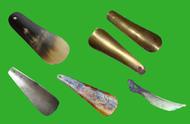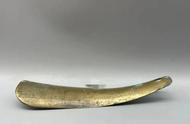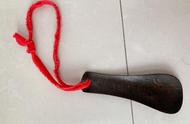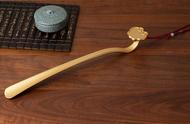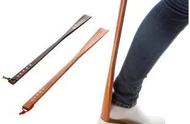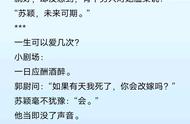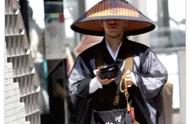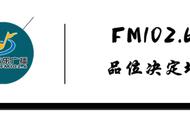鞋拔子又叫鞋拔、鞋溜子。把鞋拔放入鞋后跟,只要踩一下,就可以轻易、快速地把鞋子穿好,避免双手直接接触鞋子,卫生、方便。古代鞋拔有一定的收藏价值。
铜鞋拔

关于鞋拔子的起源,现在已很难从历史文献记载中寻觅到清晰的踪迹。
鞋拔子迄今从汉语历史文献中所能觅得的,比较清楚记述“鞋拔子”的,是清代李光庭《乡言解颐·物部上·杂物十事》中,对“鞋拔子”一番专题阐说。他谈到,“世之角,牛者为用多矣。而其因材制器,审曲面执,以成其巧者,莫鞋拔若也。

鞋拔子都是表面很光滑的,减小了脚与鞋之间的粗糙程度,也就减小了脚与鞋之间的摩擦,脚很容易进入鞋里;并且鞋拔子一般按着人的脚后跟形状设计制造,增大了受力面积,脚受到的压强也就变小,穿鞋时也就感觉舒适一些。

“鞋拽靶儿”,是缝制在鞋后帮上用以提鞋入脚用的小带儿,在有的方言里或称“小耳朵”。说起来,这“鞋拽靶儿”,恰可谓“鞋拔子”的雏形。或言之,“鞋拔子”当是同鞋子分体的“鞋拽靶儿”。
而且,“鞋拽靶儿”和“鞋拔子”这两种“提鞋的物件”和方式,各有优长,各有各的用场,并且沿用至今。
显然,“鞋拔子”的功能,乃在于用其“一角扶摇力”,帮助人们使脚轻松顺利入鞋。明代一部图文并茂的《三才图会》,可谓古代社会生活的百科全书,未见载录“鞋拔子”。德国人类学家Julius E . 利普斯的《事物的起源》,记载了圣克鲁斯群岛的木枕,西非人的梳子,印第安人的木制烟斗,也写到了中国古代南方有帆的独轮车和北方的“大车”,同样也没谈到“鞋拔子”。看来,这事物实在是太细微啦!然而,小发明可见大智慧。玩意儿不大,甚至连它的身世也被人们淡忘了,却也是享受生活的一样细小技巧,一种很实用的创造,也是聪明智慧的结晶。正是在古往今来的各种各样看似细微的“小聪明”的积奠之中,才孕育出诸如古代“四大发明”和当今计算机、航天飞机等惊世骇俗甚至史是具有改变人类命运意义的重大发明创造,此铜鞋拔表面粗细划痕交错,流通痕迹明显,表面氧化出包浆,且品相完美,具有极高的收藏价值。
英文翻译:Shoehorn also called shoe pull, shoe slit. Put the shoe into the heel of the shoe, as long as you step on it, you can easily and quickly put on the shoes, avoid direct contact with the hands of the shoes, sanitary and convenient. The ancient shoehorn has a certain collection value.
Copper shoe horn
As for the origin of shoehorn, it is difficult to find a clear trace from historical documents.
Up to now, what can be found in Chinese historical documents clearly describes "shoebuzi" is a special exposition on "shobuzi" in Li Guangting's "Xiang Yan Jiyi · Material Department · Ten Matters of Sundries" in Qing Dynasty. He said, "There are a lot of horns in the world for cows to use. And because of the material system, the surface, to become its clever, mo shoes if also.
The shoehorn is very smooth surface, reduce the roughness between the foot and the shoe, also reduce the friction between the foot and the shoe, the foot is easy to enter the shoe; And the shoehorn is generally designed and manufactured according to the shape of the heel of the person, increasing the force area, the pressure of the foot will become smaller, and when wearing shoes, it will feel comfortable.
"Shoe drag target", is sewn on the back of the shoe to lift the shoes into the feet with a small band, in some dialects or called "small ears". Say, this "shoe drag target son", it may be said that "shoehorn son" embryonic form. Or words, "shoehorn son" should be the same as the shoes of the body of the "shoe drag target son."
Moreover, the "shoe pulling target son" and "shoe pulling son" these two "shoe lifting objects" and ways, each has its own advantages, each has its own use, and is still in use today.
Obviously, the function of "shoehorn" is to help people get their feet into shoes easily and smoothly with its "rocking force". In Ming Dynasty, a book called Sancai Tuhui with pictures and pictures is an encyclopedia of social life in ancient times, without any record of "shoehorn". The German anthropologist Julius E. Lipps, in The Origin of Things, records the wooden pillows of the Santa Cruz Islands, the comb of the West Africans, and the wooden pipes of the Indians, as well as the wheelbarrows with sails in the south and carts in the north of ancient China, but also does not mention the shoehorn. It seems that this thing is really too small! However, small inventions show great wisdom. The gadget is not big, even its life history has been forgotten, but it is also the same small skills to enjoy life, a very practical creation, but also the crystallization of wisdom. It is in all sorts of seemingly minor "wisdom" in all ages of drink, the product of only breeds such as "four great inventions" in ancient and modern computer, such as the shuttle shocking change human destiny significance even history is a great invention, the surface of copper shoe horn thickness scratches, obvious effect of the flow, surface oxidation wrapped slurry, and the quality is perfect, It has a very high collection value.
,